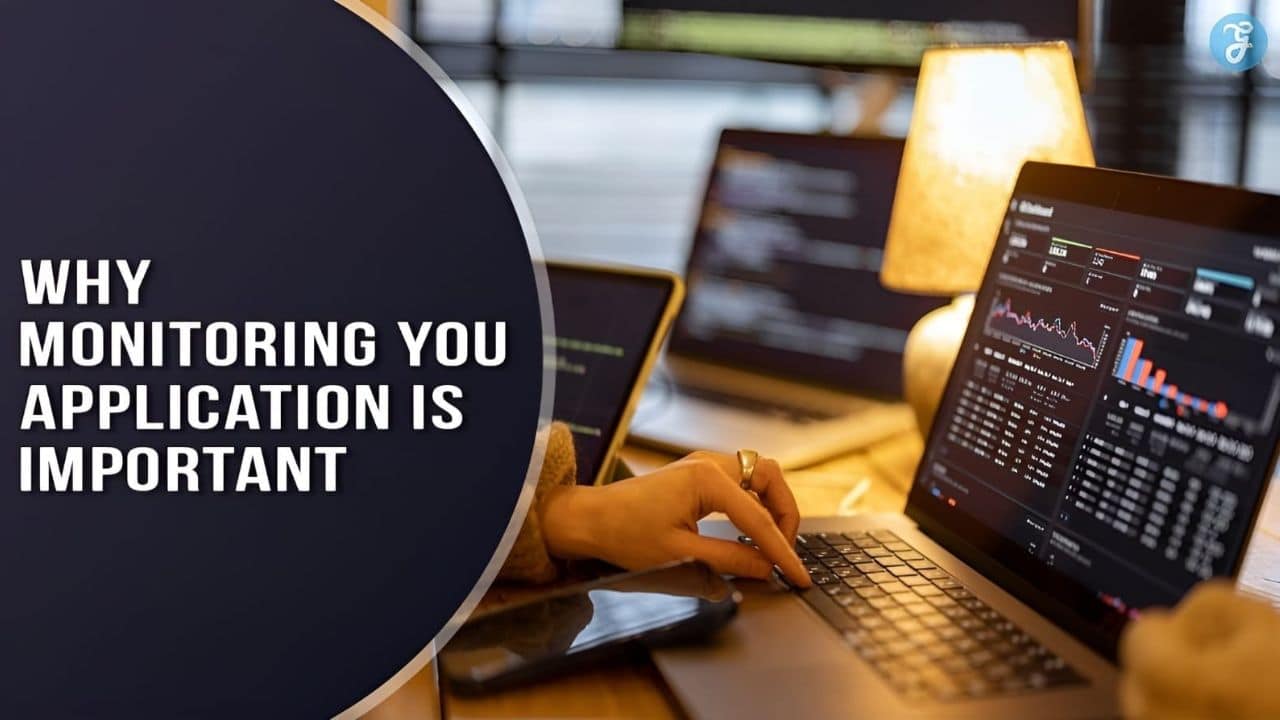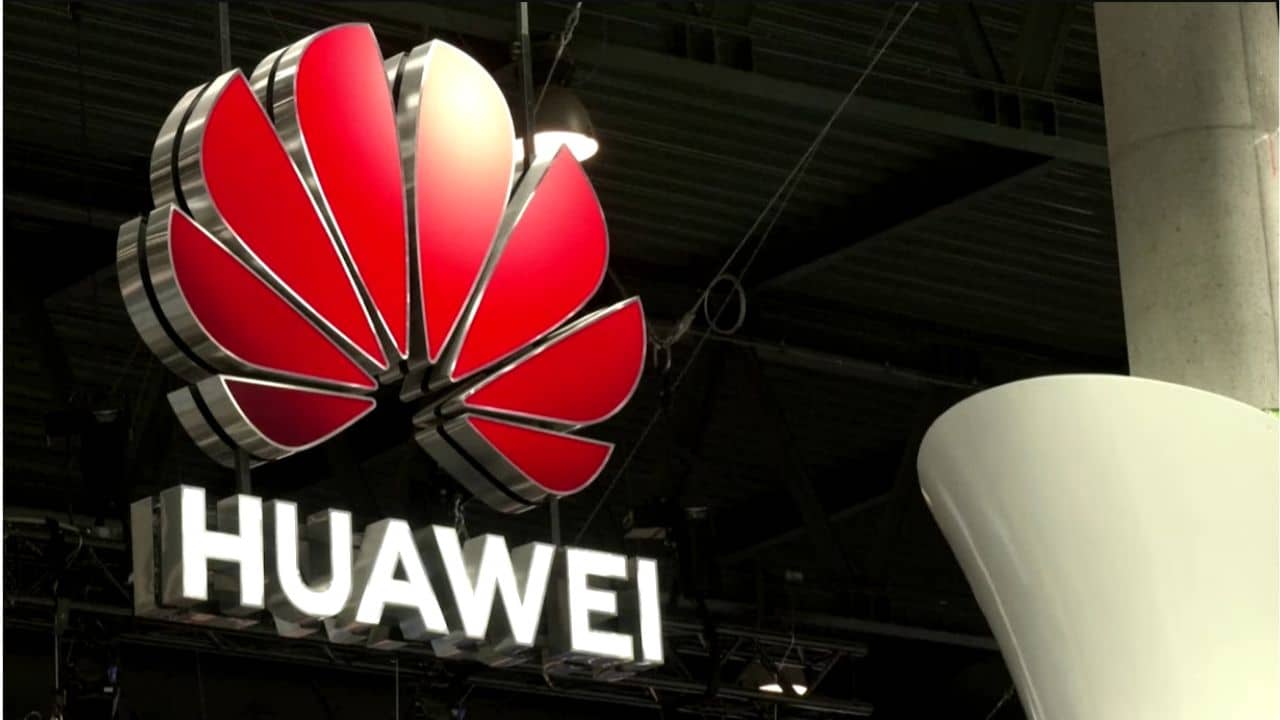Listen to the Podcast:
Are you troubled by frequent application crashes that disrupt your business operations? According to a report from Tricentis, software failures cost the worldwide economy $1.7 trillion in 2017 alone due to poor performance and unexpected downtime. This article will guide you on why monitoring your application is important.
It’ll also show how it can enhance performance, ensure security, reduce operational costs and ultimately improve the user experience.
Get ready for an enlightening journey into optimizing your application’s potential!
Content Highlights
- Frequent application monitoring is essential for businesses to ensure optimal performance, enhance the user experience, and minimize downtime and data loss.
- Monitoring applications allows organizations to proactively identify potential issues or bottlenecks before they escalate, optimizing resource utilization and improving cost control.
- Application monitoring provides valuable insights into security vulnerabilities, enabling businesses to implement proactive protective measures and safeguard sensitive information.
- Real-time monitoring, alerting systems, performance analytics, and log analysis are key features of application monitoring software that help organizations improve their applications’ overall performance.
What Is Application Monitoring?
Application monitoring is the practice of continuously observing and analyzing the performance, behavior, and availability of software applications to ensure their optimal functioning.
Definition of Application Monitoring
Application monitoring, also known as application performance monitoring (APM), is an essential IT process that involves tracking and analyzing the behavior and functionality of software applications.
It provides a big-picture view of app health by observing key metrics like load time, error rates, and user satisfaction and engagement levels. With APM, you get real-time insights into how well your applications are functioning—whether they’re running optimally or facing issues that need immediate attention.
This ongoing surveillance helps ensure all components of your infrastructure are working harmoniously to deliver optimal performance. What is its main purpose? To identify potential bottlenecks or problems before they escalate and impact end-users or business operations adversely.
The importance of Monitoring Application Performance
Monitoring your application performance isn’t just beneficial; it’s essential for the survival and growth of businesses in today’s competitive digital arena. It provides a comprehensive analysis of how well an application is performing on various metrics, including load time, downtime, response time, and other critical parameters that users value.
Without routine monitoring, underlying issues may go unnoticed until they escalate into bigger problems, disrupting smooth operations and negatively impacting the user experience. For instance, slow loading times could frustrate users, leading to higher bounce rates or even abandonment of your app altogether, which could severely harm your business reputation as well as revenue streams.
Moreover, the effective use of Application Performance Monitoring (APM) tools facilitates strategic decision-making by providing valuable insights based on quantified user-based data. Making informed decisions can help optimize both cost control and security measures, further strengthening the overall performance standards.
In essence, why monitoring your application is important boils down to ensuring its optimal functioning while continuously enhancing customer satisfaction, which contributes to sustained business success in the long run.
Why Monitoring Your Application Is Important in 2024?
Monitoring your application is a strategic undertaking that offers multiple advantages. One clear benefit lies in the ability to ensure optimal performance. Through tools like Application Performance Monitoring (APM), businesses can detect and resolve errors swiftly, leading to improved reliability and superior customer experience.
The efficient identification of bottlenecks also supports performance optimization by shedding light on aspects requiring enhancement or adjustment.
Moreover, application monitoring contributes significantly to cost control measures. It drives data-driven strategies by identifying inefficient code or infrastructure utilization, enabling organizations to streamline their resources more effectively for operational efficiency.
Security isn’t forgotten either; application monitoring provides insights into potential vulnerabilities, giving businesses the upper hand in implementing proactive protective measures.
Ultimately, these benefits reaffirm why monitoring your application is important – it bolsters business operations and ensures customers enjoy high-quality services consistently.
Read Also: Top 7 Tips and Tricks to Improve Your iPhone Privacy
Types of Application Monitoring
Application monitoring includes various types, such as system monitoring, performance monitoring, and security monitoring.
System Monitoring
System monitoring is a fundamental aspect of application monitoring that focuses on tracking and analyzing the performance, availability, and health of an entire system. It involves keeping a close eye on key infrastructure components such as servers, databases, networks, and operating systems to ensure their smooth operation.
By continuously monitoring these system elements, organizations can proactively identify potential issues before they impact the overall application performance. This helps in optimizing resource utilization, improving cost control, enhancing security measures, and ensuring reliable delivery of services to users.
In essence, system monitoring plays a crucial role in maintaining the stability and efficiency of software applications.
Performance Monitoring
Performance monitoring is a crucial aspect of application monitoring that organizations should prioritize. It involves the tracking and analysis of an application’s performance to ensure it is running at its optimal level.
By monitoring performance, businesses can identify any bottlenecks or issues that may hinder user experience and take proactive steps to address them.
Effective performance monitoring provides organizations with valuable insights into how their applications are performing in real time. It measures key metrics such as response time, latency, throughput, and error rates to gauge the overall health and efficiency of the application.
This data allows businesses to identify areas for improvement, optimize performance, and deliver a seamless user experience.
Real-time performance monitoring also helps organizations detect anomalies or unusual behavior that might lead to potential downtime or system failures. By staying on top of these issues through continuous monitoring, businesses can mitigate risks and minimize disruption for their users.
Security Monitoring
Security monitoring is a crucial aspect of application monitoring that focuses on safeguarding your application from potential threats and vulnerabilities. By continuously monitoring the security of your application, you can proactively identify any suspicious activities, unauthorized access attempts, or data breaches.
This allows you to take immediate action and implement the necessary security measures to protect your sensitive information. With the increasing incidence of cyber-attacks and data breaches, ensuring robust security monitoring for your application has become more important than ever before.
Key Features of Application Monitoring Software
Application monitoring software includes real-time monitoring, alerting and notifications, performance analytics, and log analysis to ensure optimal performance and minimize downtime.
Read more to discover how these features can help your business enhance the user experience and resolve issues promptly.
Real-time Monitoring
Real-time monitoring is a vital aspect of application monitoring that provides immediate insights into the performance of your application. It allows developers to track and analyze the behavior of their apps in real time, enabling prompt responses to any issues that might arise.
With real-time monitoring, you can identify and resolve potential bottlenecks or errors before they impact your users’ experience. By collecting valuable data on the sources of these issues, you can make informed decisions to optimize performance and enhance user satisfaction.
SolarWinds Observability is a top vendor for real-time application monitoring, offering comprehensive solutions to ensure efficient and reliable application performance.
Alerting and Notifications
Alerting and notifications are crucial features of application monitoring software. They play a vital role in ensuring that businesses stay informed about any issues or anomalies in their applications.
With the help of alerting and notification systems, IT professionals can set up specific conditions and thresholds for monitoring different metrics. When these conditions are met or exceeded, alerts are triggered to notify the relevant teams.
By receiving real-time alerts, organizations can quickly identify potential problems and take immediate action to resolve them before they escalate. This proactive approach helps minimize downtime, prevent data loss, and ensure optimal performance of critical applications.
Additionally, alerts enable businesses to address security threats promptly, safeguarding their sensitive information from unauthorized access.
With effective alerting and notifications in place, companies can maintain smooth operations while enhancing the user experience. By quickly identifying issues with application performance or functionality through timely alerts, businesses can provide seamless services to customers without disruptions or delays.
Ultimately, this leads to increased customer satisfaction and loyalty.
Performance Analytics
Performance analytics is a crucial aspect of application monitoring. It provides organizations with valuable insights into the performance of their applications, allowing them to make data-driven decisions for improvement.
With performance analytics, companies can measure metrics such as average response time and identify any bottlenecks or issues affecting application speed. By analyzing this data, organizations can optimize their applications and ensure that they meet the desired standards for an optimal user experience.
Tools like DataDog offer comprehensive metrics and insights to help organizations track and monitor the performance of their websites or other critical applications, enabling them to continually enhance their overall performance.
Log Analysis
Log analysis is a critical component of application monitoring that allows organizations to gain valuable insights into the health and performance of their applications. By evaluating the collected information, log analysis helps identify potential issues, track application performance, and troubleshoot any arising problems in real-time.
This practice provides developers and system administrators with a comprehensive view of their application’s behavior, enabling them to quickly diagnose and resolve issues before they impact the user experience.
With log analysis techniques as part of their monitoring strategy, businesses can optimize their application’s performance, enhance user satisfaction, and ensure the reliable functioning of their applications.
Read More: Employee Monitoring Trends
The Importance of Monitoring Your Application
Monitoring your application is essential for ensuring optimal performance, identifying and resolving issues, enhancing the user experience, minimizing downtime and data loss, and optimizing costs.
Ensuring Optimal Performance
Effective application monitoring is crucial for ensuring the optimal performance of your applications. By continuously monitoring key metrics such as response times, resource utilization, and error rates, you can proactively identify any performance issues and take timely action to resolve them.
This allows you to maintain high availability and provide an exceptional user experience.
Real-time monitoring is a key feature of application monitoring software that enables you to monitor the performance of your applications in real-time. With this capability, you can instantly detect any bottlenecks or slowdowns and investigate the root cause before they impact users.
Furthermore, by analyzing historical data and trends, you can gain valuable insights into the overall health of your applications and make informed decisions to optimize their performance.
By implementing effective application monitoring strategies, you can ensure that your applications are running at their peak efficiency at all times. This not only helps in reducing downtime but also minimizes the risk of data loss or other critical issues.
Identifying and Resolving Issues
One of the key reasons why monitoring your application is important is because it helps in identifying and resolving issues that may arise. By proactively monitoring your application’s performance, you can quickly identify any bottlenecks, errors, or other issues that could potentially impact the user experience.
Being able to pinpoint these issues allows you to take immediate action and resolve them before they have a negative impact on your users or business operations. It also enables you to analyze the root cause of the problem and implement preventive measures to avoid similar issues in the future.
With real-time insights provided by application monitoring tools, you can ensure that your application is running smoothly and delivers an optimal experience for your users.
Enhancing the user experience
Enhancing the user experience is a vital aspect of application monitoring. By constantly monitoring and analyzing the performance of your application, you can identify areas that need improvement and take proactive measures to enhance the overall user experience.
This includes ensuring optimal loading times, minimizing errors or crashes, and providing a seamless and intuitive interface for users. By incorporating user feedback and preferences into updates, you can continuously align your application with their expectations, resulting in increased satisfaction and loyalty.
Application management plays a crucial role in keeping up with evolving user needs and delivering an exceptional user experience.
Minimizing Downtime and Data Loss
Minimizing downtime and data loss is one of the key reasons why monitoring your application is so important. Downtime can happen unexpectedly, whether it’s due to accidental data deletion, application failure, or even cyberattacks.
It can disrupt business operations, cause financial losses, and damage your reputation. By implementing a robust monitoring system and backup solutions, you can proactively identify potential issues before they become critical.
Monitoring helps you detect and resolve problems quickly so that you can ensure optimal performance and minimize any potential data loss. With the right tools in place, you’ll be able to keep your application up and running smoothly while safeguarding your valuable data from any unforeseen events or vulnerabilities.
Cost Optimization
Cost optimization is a crucial aspect of application monitoring that businesses should not overlook. By closely tracking and analyzing the performance data of your application, you can identify areas where cost savings can be achieved without compromising on quality or user experience.
For example, Google Cloud’s operations suite provides detailed usage metrics for your apps and Google Cloud product usage, enabling you to optimize costs effectively. AWS also offers cost optimization best practices and checklists to help organizations maximize cost efficiency in their cloud environments.
With these insights, you can make informed decisions about resource allocation, scaling, and other aspects of your budget. Ultimately, by incorporating cost optimization into your application monitoring strategy, you can ensure that you are getting the most value out of your IT investments while providing an exceptional user experience.
Best Practices for Application Monitoring
Implement relevant performance metrics, proactively monitor applications, regularly analyze monitoring data, collaborate with development and IT teams, and continuously optimize application performance.
Setting up Relevant Performance Metrics
Setting up relevant performance metrics is a crucial aspect of effective application monitoring. By defining and tracking specific metrics, organizations can gain valuable insights into their application’s performance and identify any potential issues or bottlenecks.
These metrics can include error rates, success rates, service failures, and system performance indicators. For instance, monitoring the percentage of requests with errors compared to the total number of requests helps pinpoint areas that need improvement.
With the right performance metrics in place, businesses can proactively monitor their applications’ health and make data-driven decisions to ensure optimal performance for their users.
Implementing Proactive Monitoring Strategies
Implementing proactive monitoring strategies is essential for businesses to ensure the smooth functioning of their applications and infrastructure. By constantly identifying potential issues before they become major challenges, proactive monitoring allows teams to operate proactively, addressing problems before users even notice them.
This approach involves watching for triggers of potential problems in the IT infrastructure and applications, enabling businesses to detect and address issues early on. With proactive monitoring, companies can maintain high performance and reliability, minimizing downtime and enhancing the overall user experience.
It plays a crucial role in maintaining the health and stability of applications and infrastructure, helping businesses stay ahead of potential issues and mitigate risks.
Regularly Analyzing and Interpreting Monitoring Data
Regularly analyzing and interpreting monitoring data is crucial for effective application monitoring. This process involves examining the captured data and metrics to gain insights into the performance of your applications.
By regularly reviewing this information, you can identify patterns, trends, and anomalies that may indicate potential issues or areas for improvement.
Data analytics plays a vital role in making informed decisions based on monitoring data. It helps organizations understand how their applications are performing, identify bottlenecks or underperforming components, and make proactive adjustments to optimize overall performance.
By continuously analyzing and interpreting monitoring data, businesses can ensure that their applications are delivering an optimal user experience and meeting performance targets consistently.
Monitoring tools provide valuable reports and visualizations that simplify the analysis process. These tools capture, aggregate, and analyze vast amounts of data from multiple sources to detect patterns efficiently.
With these actionable insights at your fingertips, you can proactively address any emerging issues before they impact users’ experiences or lead to costly downtime.
Collaborating with Development and IT Teams
Collaboration with development and IT teams is crucial to ensuring effective application monitoring. It allows for the seamless sharing of knowledge, expertise, and resources between different departments, enabling a comprehensive and holistic approach to monitoring an application’s performance.
By working together, development and IT teams can identify potential issues early on, troubleshoot problems efficiently, and implement necessary optimizations to enhance the overall user experience.
This collaborative effort also helps foster better communication and alignment between different stakeholders involved in the application’s lifecycle. Ultimately, when development and IT teams collaborate effectively, they can proactively address any arising challenges before they escalate into major disruptions or impact business operations negatively.
Continuously Optimizing Application Performance
To ensure your application is running at its best, it’s crucial to continuously optimize its performance. By regularly monitoring and analyzing key metrics, you can identify any bottlenecks or areas for improvement.
This allows you to proactively address issues before they impact the user experience. Through ongoing optimization efforts, you can enhance the functionality, scalability, and responsiveness of your application.
By staying on top of performance monitoring, you can ensure that your application consistently meets performance standards and provides a seamless experience for users.
Also Read: Tips to Protect Your Website and Web Server
Popular Application Monitoring Tools
[Video Credits @ayazptech]
AppOptics APM, ManageEngine Applications Manager, Datadog APM, Dynatrace Full-stack Monitoring, and New Relic are widely recognized as popular application monitoring tools in the industry.
AppOptics APM
AppOptics APM is a powerful tool for monitoring your applications and ensuring optimal performance. As part of the popular application monitoring tools, it gathers crucial data to quantify different aspects that contribute to an application’s performance.
Formerly known as Librato, AppOptics is an IT infrastructure monitoring service and APM offered by SolarWinds. It goes beyond just application monitoring, providing additional features that help you effectively manage issues and enhance the user experience.
With AppOptics APM, you can track and optimize application performance while benefiting from its pricing options and comprehensive documentation for guidance. Monitoring your applications with AppOptics ensures efficiency and peace of mind in today’s dynamic digital landscape.
ManageEngine Applications Manager
ManageEngine Applications Manager is an enterprise-grade application monitoring software that provides comprehensive insights into the performance and availability of your entire application stack.
It offers detailed reports and failure analysis, allowing you to drill down into your app’s performance and identify issues quickly. With its easy configuration operations, you can efficiently monitor web applications, servers, databases, and more.
Thousands of admins worldwide rely on Applications Manager to ensure maximum business service uptime and improve their overall application performance. Try it today with a free trial and experience the benefits firsthand!
Datadog APM
Datadog APM is a top-tier application performance monitoring tool that allows users to gain deep insights into their application’s performance. With its cloud-based monitoring capabilities, Datadog APM gives you the ability to track dependencies, diagnose bottlenecks, reduce latency, and optimize code performance.
It offers real-time monitoring and analysis of your applications, enabling you to identify and resolve issues quickly. As one of the leading APM tools on the market, Datadog APM provides comprehensive documentation and tutorials for easy adoption and utilization of its powerful features.
Whether you’re running applications in Kubernetes or other environments, Datadog APM is a trusted choice for monitoring and improving your application’s performance.
Dynatrace Full-stack Monitoring
Dynatrace Full-Stack Monitoring is a powerful solution that allows you to track and monitor every component and dependency of your application. With its advanced capabilities, it automatically discovers and monitors all the relationships and interdependencies within your entire application stack, from the application itself to the underlying infrastructure.
This comprehensive monitoring not only provides insights into the performance of your application but also helps identify bottlenecks and resolve issues before they impact customers.
By ensuring observability and visibility in dynamic environments, Dynatrace Full-stack Monitoring enables you to optimize the user experience and deliver exceptional software performance.
New Relic
New Relic is a widely recognized and highly regarded application performance monitoring (APM) tool that helps businesses track the performance metrics of their web applications. IT teams can leverage New Relic to gain insights into the health and performance of their applications, enabling them to take proactive measures for optimization.
By monitoring application statistics, New Relic aims to enhance productivity while minimizing downtime.
Considered one of the best APM tools on the market, New Relic offers features such as real-time monitoring, analytics, and alerting capabilities. It allows companies to improve code quality and quickly identify user-facing issues.
Read More: Top Spy App for Android to Enhance Security and Monitoring
Case Studies: Successful Application Monitoring Implementations
In these case studies, we will explore real-world examples of how companies have successfully implemented application monitoring to detect and resolve critical issues, ensuring optimal performance and enhancing the user experience.
Examples of Companies Benefiting from Application Monitoring
Numerous companies have reaped the advantages of implementing application monitoring into their operations. For instance, a leading e-commerce platform discovered that their website was experiencing frequent crashes, resulting in lost revenue and dissatisfied customers.
By utilizing application monitoring tools, they were able to identify the root cause of these issues and quickly resolve them before further damage occurred. Another example is a mobile banking app that noticed a significant increase in user complaints about slow transaction processing times.
Through application monitoring, the company pinpointed an underperforming server and promptly allocated additional resources to improve speed and efficiency. These real-life success stories highlight the tremendous value that application monitoring can bring to businesses by ensuring optimal performance and delivering an enhanced user experience.
How Application Monitoring Helped in Resolving Critical Issues
Application monitoring plays a crucial role in quickly identifying and resolving critical issues within software applications. By constantly tracking key performance metrics, such as availability, response time, error rates, code-level errors, and downtime, application monitoring provides valuable insights into the user experience.
This allows businesses to proactively address any potential problems before they escalate, ensuring that the application continues to perform optimally and providing a seamless user experience.
Furthermore, with real-time monitoring and alerting capabilities, organizations can promptly identify any abnormal behavior or performance degradation and take immediate action to resolve it.
Future Trends in Application Monitoring
In the future, application monitoring will see advancements in AI and machine learning capabilities for more intelligent analysis and automated issue resolution.
AI and Machine Learning in Monitoring
AI and machine learning are revolutionizing the field of application monitoring. With these advanced technologies, businesses can gain valuable insights into the performance of their applications.
AI algorithms can analyze huge amounts of data in real-time, detecting patterns and anomalies that may impact application performance. Machine learning models can learn from past incidents to predict potential issues before they occur, allowing for proactive troubleshooting and optimization.
These capabilities greatly enhance the efficiency and effectiveness of application monitoring, helping businesses maximize their application’s performance while minimizing downtime and disruptions.
Edge Computing and IoT Monitoring
Edge computing plays a crucial role in the world of IoT monitoring, offering significant benefits for building efficient monitoring systems. By bringing data processing and storage closer to the devices themselves, edge computing reduces latency and enables real-time analytics.
This is particularly advantageous for applications such as IoT, where timely data insights are essential for effective monitoring. In industries like manufacturing, edge computing facilitates condition-based monitoring by allowing machines to generate valuable data that improves efficiency and maintenance.
With metrics like site availability, network performance, and storage utilization, edge computing proves its value across various sectors utilizing smart IoT applications. Its ability to reduce latency and enable real-time processing makes it an essential consideration for effective application monitoring.
Shift towards Cloud-based Monitoring Solutions
With the rapid growth of cloud computing, there has been a significant shift towards cloud-based monitoring solutions. Traditional on-premises monitoring tools are no longer sufficient in today’s dynamic and scalable environments.
Cloud-based monitoring offers enhanced flexibility, scalability, and cost-effectiveness for businesses. It allows organizations to monitor their applications and infrastructure remotely from anywhere in the world, without the need for complex hardware installations or maintenance.
Cloud monitoring platforms provide real-time insights into application performance, resource utilization, security threats, and overall system health. With the ability to collect massive amounts of data and leverage advanced analytics capabilities, these solutions enable businesses to detect issues early on and take proactive measures to optimize application performance.
Moreover, as more companies embrace cloud-native architectures and adopt microservices or serverless computing models, cloud-based monitoring becomes essential for effectively managing these distributed systems at scale.
By leveraging cloud-based monitoring solutions like Google Cloud Monitoring or other industry-leading platforms mentioned above [in point 9], businesses can gain better visibility into their cloud environments while ensuring optimal performance and user experience across all digital touchpoints.
Frequently Asked Questions (FAQs)
It’s time for us to learn some common questions related to application monitoring
1. Why is monitoring your application important?
Monitoring your application is important because it allows you to proactively identify and address issues before they impact users. It helps ensure optimal performance, minimize downtime, and maintain a positive user experience.
2. What are the core benefits of monitoring my application?
Monitoring your application offers several benefits, including early detection of problems, improved system reliability, faster response times to incidents, enhanced security against threats or attacks, and valuable insights for making data-driven decisions to optimize performance.
3. How can monitoring help prevent potential downtime?
By continuously monitoring key metrics such as server load, response time, and error rates, you can identify patterns or anomalies that may indicate impending issues. This allows you to take proactive measures to mitigate risks and reduce the chances of unexpected downtime that could negatively impact your business.
4. What types of tools are available for application monitoring?
There are various tools available for application monitoring depending on your specific needs. Some popular options include APM (Application Performance Monitoring) tools like New Relic or Datadog which provide comprehensive insights into system health and performance metrics.
Final Words
Monitoring your application is crucial for maintaining optimal performance, quickly resolving issues, enhancing user experience, minimizing downtime and data loss, and effectively managing costs.
So finally reading the whole guide on why monitoring your application is important, you shouldn’t underestimate the power of application monitoring; it’s your key to success in today’s digital world.







































